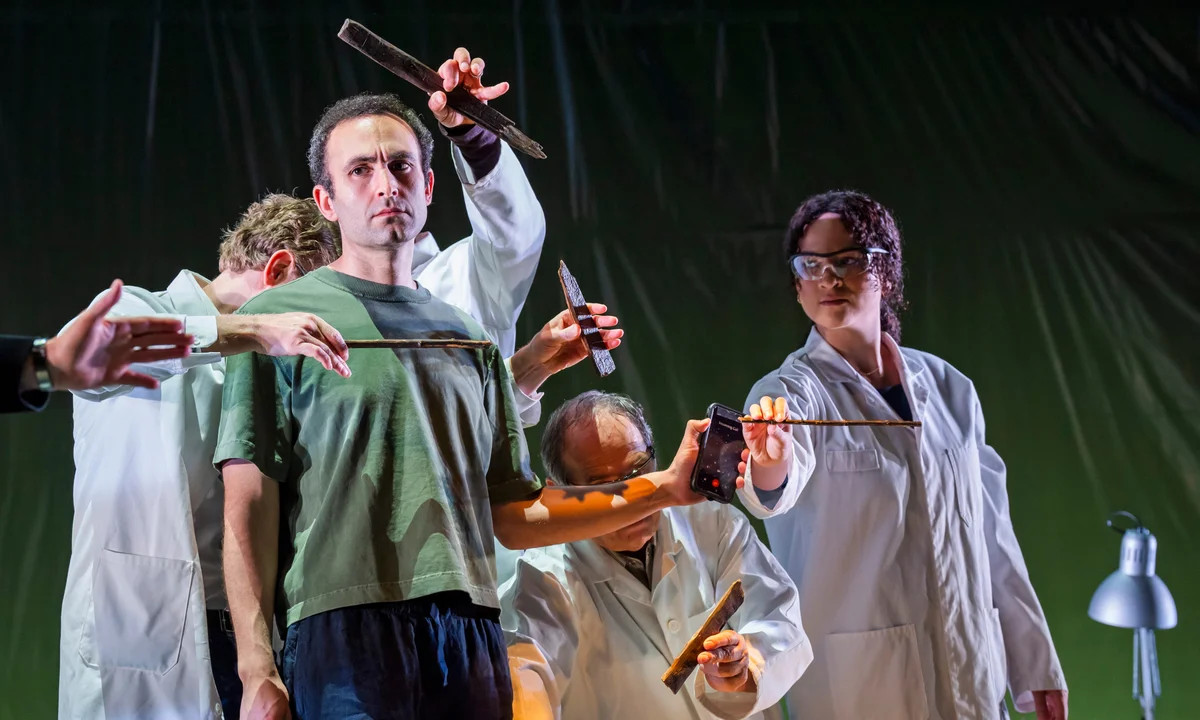Theatre Practitioner - Complicité.
Overview
Complicité are a British theatre devising company - created in 1983. They have a very unique style which can be characterised by 6 key features:

1. Interwoven Story Lines.
The number one thing Complicité do is incorporate at least 2 (sometimes many many more) story lines that flow around each other. This is not quite episodic theatre with alternating episodes telling stories - characters may share the stage at the same time despite being in totally different stories.
This is similar to Paperbird's flowing sentences technique but rather than link individual words between settings, Complicité link much broader themes between the different story lines.
This is primarily so the audience has to actively discover the link between the contrasting scenarios - the link is almost always some sort of political message. By burying this message so the audience has to search for it, the message becomes much more impactful and often the audience only fully appreciate it long after they finish watching the play.
2. High-Tech Multimedia.
In Complicité's work, they will often tell large chunks of the story through digital multimedia. In this way, they are not dissimilar from Katie Mitchell. Examples of this include projectors, complicated sound systems, phones and even live recordings of audiences.
It is not just the story that is told through digital multimedia - characters emotions can be shown or scenes set. This ties in nicely with the layers of meaning in the flowing storylines because different visual or audio cues can be used to alert audiences to links between stories.
The main reason this is done is because Complicité aim to create immersive atmospheres. They want audiences to feel as though they are a part of the play in order to more fully connect with a character or appreciate the underlying message.


4. Memories and Real Life Stories.
'All memories are told in first person.'
Complicite are a massive advocate for using memories in the work. Characters will narrate memories that unfold, other characters becoming supporting characters in these episodic scenes.
These memories often have dream-like supernatural qualities and are primarily used to create a powerful bond between the audience and the character who's memory it is. This is because the audience recognise it is true.
A similar effect is gained from the use of real life stories. In the rehearsal process, Complicite will interview people (not dissimilar from paper birds) to find out their own personal stories they can weave in as a story line. It is very common to see one true, real-life inspired story life coupled with a more abstract plot-line of their devising.
3. Physical Theatre.
It is slightly unfair to call Complicité a physical theatre company - they are not. They take elements of physical theatre in order to tell their interwoven story lines. Primarily they use:
- Stylised movement.
- Choral moments.
- Mime.
- Slow motion.
The last of these, slow motion, is widely used in moments of great tension to drag the moment out and reinforce the message behind it. It can also be used to differentiate between the story lines. One story line might end in a slow motion moment as another picks up with a slowed scene.

5. Naturalistic Acting and Fleshed out Characters.
Although there are a huge number of non-naturalistic elements to Complicite, including dance, puppets, direct address and multimedia, the acting from some characters is naturalistic. Despite multi-rolling and non-naturalistic switches between scenes, lots of Complicities scenes are naturalistic and believable.
I really like this aspect of Complicities work and when I do my devising in their style, I want to draw on this because i feel it makes the impact of the piece more profound and lasting if the characters are relatable and multi-faceted.

6. Direct Address and Audience Involvement.
Complicite are certainly a non-naturalistic production company and this is highlighted most clearly in their use of direct address and audience involvement.
Fro example, in mnemonic, each member of the audience is given a leaf in a bag. At that the beginning of the play they are invited to trace the leaf with their fingers under prompts from an actor (who is not yet in character).
Complcite do this to further the connection between audience and character. This powerful bond is then used later in the play to elicit a powerful emotional response that often has a delayed effect - the true meanings and connotations are only grasped in the period of reflection after the play. This is highlighted by Simon Mcburney's quote:
"Theatre only exists in the present."